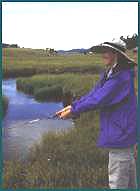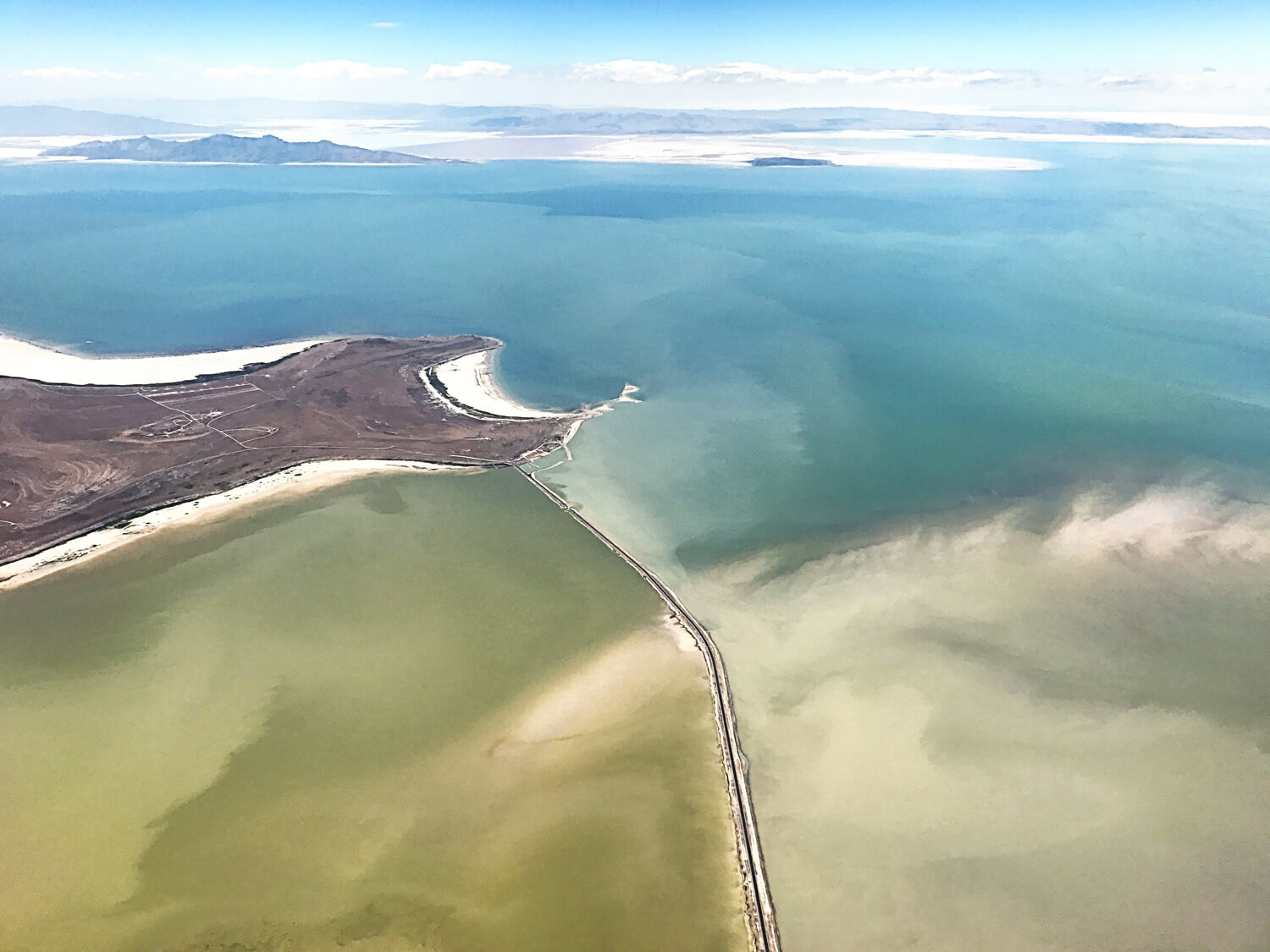Standing on the slopes of Cerros Del Abrigo scanning the grasslands of the Valle Grande spread out below, you might feel as though you’re looking down on the famed Lamar Valley of Yellowstone. Abundant elk herds feed in wide swaths of emerald grasses, and miles of prime trout streams give way to hillsides of ponderosa pine. Park-like forests provide cathedral lighting effects that reveal hot springs and prehistoric shards of glassy obsidian rock.
This dazzling landscape is part of the new Valles Caldera National Preserve (VCNP). After a short climb from the trailhead, my wife and I are perched on an old logging road sharing the view with an environmental studies professor we have just met from a small New England college. We comprise three of the five people scheduled to be on the mountain, an inspiring place that until recently could only be gazed on longingly by travelers, anglers, and hunters driving State Road 4.
Formerly private lands known locally as the Baca Ranch, the preserve consists of 89,000 acres situated high in the Jemez Mountains of New Mexico surrounded by the Santa Fe National Forest and Bandelier National Monument. Today this working cattle ranch is property of the United States. Fans of movie stars Tommy Lee Jones or Cate Blanchett would recognize its sweeping vistas from Ron Howard’s 2003 western thriller, The Missing, where it served as the main homestead.
The similarities to Yellowstone are no coincidence. Both are scenes of ancient cataclysmic eruptions that created calderas, or collapsed volcanoes. Today, they are called hotspots where molten magma still reaches closest to the earth’s surface. Additionally, after elk became extinct in New Mexico, 49 elk from Yellowstone were reintroduced here yielding a herd of approximately 4,500 today.
But the similarities end there. Valles Caldera is something altogether different from a national park. It represents not only a fresh alternative to existing federal park and forest management, but a return to the original vision of national parks paying their own way. Whether that vision will be realized depends on how well VCNP responds to the market-based framework created by Congress.
Fed up with the amount of western land being consumed by the federal government and managed by inefficient bureaucracies, New Mexico senator Pete Domenici worked to ensure that this environmental purchase would not be business as usual. He had good reason for concern. As PERC has reported consistently, national park funding has increased over the years, but even so the National Park Service reports a $6 to $9 billion backlog of unfunded maintenance, acquisition, and resource management projects (Fretwell 2004).
With most of their budgets coming from Congress, federal land managers traditionally work to satisfy the interests of politicians. They have little incentive to direct funding to its most appropriate uses, to find new sources of revenue, or to keep costs down to make ends meet.
The VCNP seeks to change the incentives by serving as a market-based experiment in public land management. Modeled after a business entity, the preserve has two features that distinguish it from our national parks and forests.
First, the Valles Caldera is managed by a legal entity called a trust, akin to a board of directors. Similar to the park and wilderness endowment boards first proposed by PERC in the 1980s (Stroup and Baden 1982), the trust in this case is comprised mostly of private citizens with responsibility both to protect the resource and to generate revenue to benefit the property. While trusts are new to federal conservation lands (Anderson and Fretwell 1999), as many as 1,300 local and regional land trusts already protect more than 6.2 million acres of open space in the United States (Land Trust Alliance 2000).
Federal experience in trustee management, however, is limited to the Presidio in San Francisco and the memorial to victims of the Oklahoma City bombings. The Valles Caldera is the largest use of a trust for federal land management and the first with the primary purpose of land conservation.
Congress created the Valles Caldera Trust with a nine-member board of trustees appointed by the president. The law requires trustee expertise in areas important to the trust’s mission, such as livestock management, wildlife and fish management, and sustainable forestry. This will ensure that interests in the preserve are balanced and the most appropriate uses for the land considered.
Equal in importance to the management structure is the charge from Congress to make the preserve financially self-sustaining. If successful, the preserve will be funded solely from its own activities and decisions, much like any other business entity.
To achieve financial self-sufficiency, the trustees will have to generate revenue from the environmental marketplace. Costs will have to be contained, trade-offs between resources considered, visitor revenues increased by charging realistic fees and restricting access, and any additional revenues reinvested. Unlike most other public lands, the VCNP will be allowed to keep the revenue it generates. The pressure to become self-sufficient should also encourage entrepreneurship and creativity, while still upholding the preserve’s mission of protecting Valles Caldera’s distinctive landscape.
User fees and access restrictions will play an important role. In fact, the “sense of solitude for visitors,” says VCNP communications director Julie Grey,1 makes the preserve unique. In advance of our own visit to the preserve, my wife and I had to make a reservation to hike the Cerros Del Abrigo Trail. With only a dozen hikers allowed on the trail during our designated time, we gladly paid $10 each to have the preserve to ourselves. Others pay for privately led photo excursions and fly-fishing clinics. In its first year of operation alone, access fees for elk hunting, trout fishing, and hiking grossed close to half a million dollars.
Congress also approved other revenue-generating uses not traditionally allowed in national parks. The act indicates that the preserve should continue functioning as a working ranch, yielding revenue from grazing fees, and that timber production can be part of the revenue mix. Other sources might include scientific and academic research grants, Hollywood, private fundraising, and lodging opportunities from existing buildings. Revenues from fees and other nonappropriated sources already cover roughly 16 percent of the actual operating expense.
Though not pure free market environmentalism, the trust approach goes a long way toward fostering free market environmentalist values in the public sector. But even at this early stage, opportunities to get the incentives right have been missed.
For one, Congress gave the preserve fifteen years of guaranteed dependence on federal subsidies. This hardly provides the incentive to move fast on revenue or to contain costs (Fairfax, Gwin, and Huntsinger 2004, 469). And if the preserve fails to become self-sustaining in fifteen years, it can request a continuation of federal funding beyond the deadline. After twenty years of federal funding the trust itself may be terminated; if so, management would revert to the Santa Fe National Forest, which just happens to have a seat on the trust.
In 2003, the trust was required to submit a fifteen year plan outlining how it would decrease its appropriated funds from Congress.2 The trust produced a disappointingly short product, conceptual in nature with no true financial plan for meeting its revenue-enhancing or cost-cutting obligations. In fact, the plan focuses mostly on the notion that there will have to be federal increases in spending to support infrastructure development.
And even at this early stage, the trust appears to be hedging. Describing “federal overhead costs” such as compliance with the National Environmental Policy Act, cultural interaction with local pueblos, and public outreach, the trust concludes that “it may prove reasonable for continuing appropriations to cover these costs” (VCNP 2003).
Lastly, although many environmental and recreational advocates worked hard to include the Valles Caldera among the nation’s publicly protected treasures, few have stepped forward to organize much-needed private financial support. The preserve is now in its fourth year of operation and no 501(c)(3) support organization or friends group has emerged to help raise funds.
Admittedly, it is early, and there is still hope these issues won’t prove fatal. The Valles Caldera National Preserve has established a framework for environmental entrepreneurship. Now only time and resolve will determine if the public land managers can behave like free market environmentalists.
NOTES
1. Julie Grey, VCNP communications director, personal conversation, Sept. 30, 2004.
2. Valles Caldera Preservation Act 2000, Public Law 106-248.
REFERENCES
Anderson, Terry, and Holly Lippke Fretwell. 1999. A Trust for Grand Staircase-Escalante. PERC Policy Series, PS-16. Bozeman, MT: PERC.
Fairfax, Sally K., Lauren Gwin, and Lynn Huntsinger. Presidio and Valles Caldera: A Preliminary Assessment of Their Meaning for Public Resource Management. Natural Resources Journal 44(2): 445-73.
Fretwell, Holly Lippke. 2004. Public Land Management. In 2004 Index of Leading Environmental Indicators, 9th ed., by Steven Hayward. San Francisco and Washington, DC: Pacific Research Institute and the American Enterprise Institute, 65-74.
Land Trust Alliance. 2000. National Land Trust Census. Washington, DC.
Stroup, Richard L., and John Baden. 1982. Endowment Areas: A Clearing in the Policy Wilderness? Cato Journal 2(3): 691-708.
Valles Caldera National Preserve. 2003. Draft Framework and Strategic Guidance for Comprehensive Management. Chapter 5, Stewardship: The Values of the Trust and Our Vision for How We Will Conduct Our Business. Los Alamos, NM.




